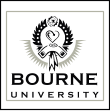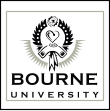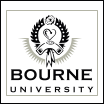© bOURNE uNIVERSITY 2021
A Second "Burgess Shale" Found in Australia
Proves Existence of A First Archean Continent
Image: The Pilbara Craton. Insert Left: RTM Groups Mining Company Lenbert no 4 mine being worked by excavators. Left: A possible Acastidae also from the Trilobita class found at the site. The fossil is similar to a Bermel Escarpment fossil from Mt. Thiel, Antarctica. (4 meters) Australia| A fossil deposit in the Pilbara, Western Australia region found by a team of Paleoclimatologists brings the possibility of an early continent called Yidath that may have been the cradle of all life. A team of Paleoclimatologists from the University of Canterbury discovered a second "Burgess Shale" in Pilbara, Western Australia after miners excavating at the Lenbert no. 4 mine owned by the RTM Group Mining Company of Port Hedland, uncovered the area. The "Pilbara Shale", as researchers are reporting it, is an astonishing fossil deposit displaying highly advanced biological species of some 3.5 billion years old. Professor Thomas R. Martin, a spokesman for the Canterbury team, reported that the creatures possessed strange anatomical features demonstrating many unknown species, and others slightly resembling other familiar animals. "We have been here for the past three days excavating the mine site and we eventually discovered a "Pilbara Shale" of a fossil deposit in the crust layers. While in 2017 remains of the earliest known life on land were discovered in geysers and mineral deposits of the Dresser Formation in this same craton, our "Pilbara Shale" animals lived some 3.5 billion years ago, and were not mere microorganisms. Noted were a massive arthropod with stinging mandibles belonging to the Chilopoda class and an artiopodan from the class Trilobita. We discovered these Archean creatures have very large and diverse species classifications, as are the familiar represented species collected as well," Martin reported. One of the paleoclimatologists, Geoscientist Baron T. Maxwell, also of Canteberry, suggested that the Pilbara find represents one of the finest fossil records found in only three of the most pristine Archean crusts found on Earth, along with the Kaapvall Craton in South Africa and the Bermel Escarpment find near Mt. Thiel, Antarctica. New views recently presented by the International Science Council in Brussels suggest that all three locations may have been part of the newly speculated Archean continent of Yidath, sharing the craton remains from the Vaalbara Supercontinenet and the early Ur continent. The Pilbara Craton location showing surviving Archean continental lithosphere. "The fossil records found in the Pilbara Craton has really helped us understand and predict how and when the first living creatures evolved then and what the Earth's climate was 3.5 billion years ago years when we believed a fiery and evolving geography combined with methane and small oxygen levels were not conductive to an advanced, thriving biosphere. This is not the model of the Archean Eon 3.5 billion years ago we now know that hosted the appearance of the first plants and animals, therefore, we now understand how and when the world may have actually evolved," Maxwell added. A researcher, Dan Barlow of Bourne University stated that the fossil- bearing deposit discovered in Antarctica is a part of the evidence of the formation of Yidath when the earth started. "I never thought there would be another Thiel Mountains (Antarctica) find until this was exposed. The three and a half billion year existence of these strange creatures found in the Pilbara Craton gives us a proof of the Yidathian continent that was formed when the Earth began," Barlow, the researcher added. The first "Thiel Shale" find was discovered at the Bermel escarpment of Antarctica near Mt. Thiel by a paleontologist, Charles Connor on 12 June 2019 who also established an archaeological base camp at the flanks of Bermel site before returning to Norwich University in England. Geoscience artist conception of the first continent of Yidath 4 billion years ago now based on planetary science date from NASA, European SA and Jaxa satellites. Despite accepted theories on the formation of the Earth during the Archean Period, new evidence suggest a new early geological model may be emerging. Geological researcher Harry Blackmore, PhD of Sweden's School of Earth Sciences has been requesting since May for the site to be restricted until further analysis provides the initial data for formal written presentation to the Nobel Council of Associated Sciences. Two research students, Derek Biggs and Simon Conway Morris of the University of Cambridge are assisting Jennifer Hagens in the reassessment of the Burgess Shale. The infamous Oxford Professor, Jebidiah Ethan Smith (died 1870?) in his explorations and early archaeological work in England brought the 'first' Archean continent Yidath to the public's attention through his extensive book "A Commentary on the Book of Gates" first published by Oxford Press in 1868. Smith suggested that an extraordinary idea of the 'First Gods" and the Yidathian "Continent of Horrors" explaining the diversity of the ancient Archean fossils proved that life forms in those days were not more incongruous in body form and more evolutionarily developed than the life forms at the time. His work was dismissed by many as pseudo- science, based on the many religious cults and 'ancient spirit texts' that appeared in Victorian England at the time.


THE BOURNE JOURNAL OF
ARCHAEOLOGY








CURRENT ISSUE

Member Since May 1922
Explore
Discover
Find
Catalog
Publish
Reward

LONDON-ROME-BERLIN-MOSCOW-NAPLES


Recent Articles
Proud Sponsor of Bourne’s Journal
Sponsored Works
News of the World






related posts
SHARE ON:
SHARE ON:

© bOURNE uNIVERSITY 2021
A Second "Burgess Shale" Found in Australia
Proves Existence of A First Archean
Continent
Image: The Pilbara Craton. Insert Left: RTM Groups Mining Company Lenbert no 4 mine being worked by excavators. Left: A possible Acastidae also from the Trilobita class found at the site. The fossil is similar to a Bermel Escarpment fossil from Mt. Thiel, Antarctica. (4 meters) Australia| A fossil deposit in the Pilbara, Western Australia region found by a team of Paleoclimatologists brings the possibility of an early continent called Yidath that may have been the cradle of all life. A team of Paleoclimatologists from the University of Canterbury discovered a second "Burgess Shale" in Pilbara, Western Australia after miners excavating at the Lenbert no. 4 mine owned by the RTM Group Mining Company of Port Hedland, uncovered the area. The "Pilbara Shale", as researchers are reporting it, is an astonishing fossil deposit displaying highly advanced biological species of some 3.5 billion years old. Professor Thomas R. Martin, a spokesman for the Canterbury team, reported that the creatures possessed strange anatomical features demonstrating many unknown species, and others slightly resembling other familiar animals. "We have been here for the past three days excavating the mine site and we eventually discovered a "Pilbara Shale" of a fossil deposit in the crust layers. While in 2017 remains of the earliest known life on land were discovered in geysers and mineral deposits of the Dresser Formation in this same craton, our "Pilbara Shale" animals lived some 3.5 billion years ago, and were not mere microorganisms. Noted were a massive arthropod with stinging mandibles belonging to the Chilopoda class and an artiopodan from the class Trilobita. We discovered these Archean creatures have very large and diverse species classifications, as are the familiar represented species collected as well," Martin reported. One of the paleoclimatologists, Geoscientist Baron T. Maxwell, also of Canteberry, suggested that the Pilbara find represents one of the finest fossil records found in only three of the most pristine Archean crusts found on Earth, along with the Kaapvall Craton in South Africa and the Bermel Escarpment find near Mt. Thiel, Antarctica. New views recently presented by the International Science Council in Brussels suggest that all three locations may have been part of the newly speculated Archean continent of Yidath, sharing the craton remains from the Vaalbara Supercontinenet and the early Ur continent. The Pilbara Craton location showing surviving Archean continental lithosphere. "The fossil records found in the Pilbara Craton has really helped us understand and predict how and when the first living creatures evolved then and what the Earth's climate was 3.5 billion years ago years when we believed a fiery and evolving geography combined with methane and small oxygen levels were not conductive to an advanced, thriving biosphere. This is not the model of the Archean Eon 3.5 billion years ago we now know that hosted the appearance of the first plants and animals, therefore, we now understand how and when the world may have actually evolved," Maxwell added. A researcher, Dan Barlow of Bourne University stated that the fossil-bearing deposit discovered in Antarctica is a part of the evidence of the formation of Yidath when the earth started. "I never thought there would be another Thiel Mountains (Antarctica) find until this was exposed. The three and a half billion year existence of these strange creatures found in the Pilbara Craton gives us a proof of the Yidathian continent that was formed when the Earth began," Barlow, the researcher added. The first "Thiel Shale" find was discovered at the Bermel escarpment of Antarctica near Mt. Thiel by a paleontologist, Charles Connor on 12 June 2019 who also established an archaeological base camp at the flanks of Bermel site before returning to Norwich University in England. Geoscience artist conception of the first continent of Yidath 4 billion years ago now based on planetary science date from NASA, European SA and Jaxa satellites. Despite accepted theories on the formation of the Earth during the Archean Period, new evidence suggest a new early geological model may be emerging. Geological researcher Harry Blackmore, PhD of Sweden's School of Earth Sciences has been requesting since May for the site to be restricted until further analysis provides the initial data for formal written presentation to the Nobel Council of Associated Sciences. Two research students, Derek Biggs and Simon Conway Morris of the University of Cambridge are assisting Jennifer Hagens in the reassessment of the Burgess Shale. The infamous Oxford Professor, Jebidiah Ethan Smith (died 1870?) in his explorations and early archaeological work in England brought the 'first' Archean continent Yidath to the public's attention through his extensive book "A Commentary on the Book of Gates" first published by Oxford Press in 1868. Smith suggested that an extraordinary idea of the 'First Gods" and the Yidathian "Continent of Horrors" explaining the diversity of the ancient Archean fossils proved that life forms in those days were not more incongruous in body form and more evolutionarily developed than the life forms at the time. His work was dismissed by many as pseudo-science, based on the many religious cults and 'ancient spirit texts' that appeared in Victorian England at the time.

THE BOURNE JOURNAL OF
ARCHAEOLOGY







related posts
SHARE ON:
SHARE ON:


Recent Articles

Sponsored Works
Proud Sponsor of Bourne’s Journal




© bOURNE uNIVERSITY 2021
A Second "Burgess Shale"
Found in Australia Proves
Existence of A First
Archean Continent
Image: The Pilbara Craton. Insert Left: RTM Groups Mining Company Lenbert no 4 mine being worked by excavators. Left: A possible Acastidae also from the Trilobita class found at the site. The fossil is similar to a Bermel Escarpment fossil from Mt. Thiel, Antarctica. (4 meters) Australia| A fossil deposit in the Pilbara, Western Australia region found by a team of Paleoclimatologists brings the possibility of an early continent called Yidath that may have been the cradle of all life. A team of Paleoclimatologists from the University of Canterbury discovered a second "Burgess Shale" in Pilbara, Western Australia after miners excavating at the Lenbert no. 4 mine owned by the RTM Group Mining Company of Port Hedland, uncovered the area. The "Pilbara Shale", as researchers are reporting it, is an astonishing fossil deposit displaying highly advanced biological species of some 3.5 billion years old. Professor Thomas R. Martin, a spokesman for the Canterbury team, reported that the creatures possessed strange anatomical features demonstrating many unknown species, and others slightly resembling other familiar animals. "We have been here for the past three days excavating the mine site and we eventually discovered a "Pilbara Shale" of a fossil deposit in the crust layers. While in 2017 remains of the earliest known life on land were discovered in geysers and mineral deposits of the Dresser Formation in this same craton, our "Pilbara Shale" animals lived some 3.5 billion years ago, and were not mere microorganisms. Noted were a massive arthropod with stinging mandibles belonging to the Chilopoda class and an artiopodan from the class Trilobita. We discovered these Archean creatures have very large and diverse species classifications, as are the familiar represented species collected as well," Martin reported. One of the paleoclimatologists, Geoscientist Baron T. Maxwell, also of Canteberry, suggested that the Pilbara find represents one of the finest fossil records found in only three of the most pristine Archean crusts found on Earth, along with the Kaapvall Craton in South Africa and the Bermel Escarpment find near Mt. Thiel, Antarctica. New views recently presented by the International Science Council in Brussels suggest that all three locations may have been part of the newly speculated Archean continent of Yidath, sharing the craton remains from the Vaalbara Supercontinenet and the early Ur continent. The Pilbara Craton location showing surviving Archean continental lithosphere. "The fossil records found in the Pilbara Craton has really helped us understand and predict how and when the first living creatures evolved then and what the Earth's climate was 3.5 billion years ago years when we believed a fiery and evolving geography combined with methane and small oxygen levels were not conductive to an advanced, thriving biosphere. This is not the model of the Archean Eon 3.5 billion years ago we now know that hosted the appearance of the first plants and animals, therefore, we now understand how and when the world may have actually evolved," Maxwell added. A researcher, Dan Barlow of Bourne University stated that the fossil-bearing deposit discovered in Antarctica is a part of the evidence of the formation of Yidath when the earth started. "I never thought there would be another Thiel Mountains (Antarctica) find until this was exposed. The three and a half billion year existence of these strange creatures found in the Pilbara Craton gives us a proof of the Yidathian continent that was formed when the Earth began," Barlow, the researcher added. The first "Thiel Shale" find was discovered at the Bermel escarpment of Antarctica near Mt. Thiel by a paleontologist, Charles Connor on 12 June 2019 who also established an archaeological base camp at the flanks of Bermel site before returning to Norwich University in England. Geoscience artist conception of the first continent of Yidath 4 billion years ago now based on planetary science date from NASA, European SA and Jaxa satellites. Despite accepted theories on the formation of the Earth during the Archean Period, new evidence suggest a new early geological model may be emerging. Geological researcher Harry Blackmore, PhD of Sweden's School of Earth Sciences has been requesting since May for the site to be restricted until further analysis provides the initial data for formal written presentation to the Nobel Council of Associated Sciences. Two research students, Derek Biggs and Simon Conway Morris of the University of Cambridge are assisting Jennifer Hagens in the reassessment of the Burgess Shale. The infamous Oxford Professor, Jebidiah Ethan Smith (died 1870?) in his explorations and early archaeological work in England brought the 'first' Archean continent Yidath to the public's attention through his extensive book "A Commentary on the Book of Gates" first published by Oxford Press in 1868. Smith suggested that an extraordinary idea of the 'First Gods" and the Yidathian "Continent of Horrors" explaining the diversity of the ancient Archean fossils proved that life forms in those days were not more incongruous in body form and more evolutionarily developed than the life forms at the time. His work was dismissed by many as pseudo-science, based on the many religious cults and 'ancient spirit texts' that appeared in Victorian England at the time.


THE BOURNE JOURNAL OF
ARCHAEOLOGY



SHARE ON:
SHARE ON:


Member Since May 1922
Explore
Discover
Find
Catalog
Publish
Reward

LONDON-ROME-BERLIN-MOSCOW-NAPLES



Proud Sponsor of Bourne’s Journal


Like our Sponser








